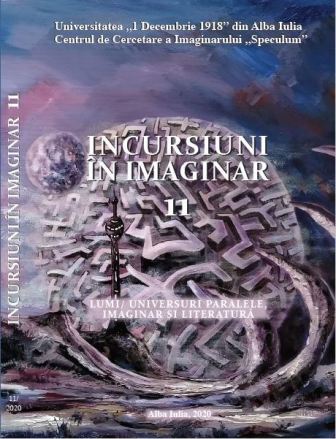Mihai Eminescu: basmul și lumile sale
Mihai Eminescu: The Fairy Tale and Its Worlds
Author(s): Liliana DanciuSubject(s): Customs / Folklore, Romanian Literature, Philology, Hermeneutics, Theory of Literature, Ontology
Published by: Editura Aeternitas
Keywords: myth; dream; Eminescu; hell; Prince Charming; spiritual transmutation;
Summary/Abstract: The dream and the existence as a dream, the alternative worlds from astral or insular ideal spaces reached by Eminescu’s heroes as the goal of a spiritual journey are expressions of the author’s propensity towards totality. These fictional worlds are populated by characters-ideas and characters-philosophical concepts in order to outline an ontology and a metaphysics of the ideal human being, detached from the Evil of material existence, spiritually and intellectually propelled to the Idea. In this study we will follow the construction of such worlds and their inhabitants by appealing to the fairy tale ”Făt-Frumos din lacrimă”. Conceived from the tear of the Mother of God, Făt-Frumos is the superlative human expression of divine beauty, a corollary of all moral qualities: courage, generosity, sensitivity, purity. The supernatural conception recommends him as “son of God”, suggestion reinforced by the pseudonym from the first part of the fairy tale, “the shepherd-emperor”, enchanting everyone with his whistle. Belonging to a mythical world in which divine miracles are still possible, because the Lord and St. Peter walk the earth barefoot, the hero naturally travels through several worlds and meets fairytale characters, some taken from the folk imaginary, others original meant to embody personal ideas. He follows a path of exemplary transformation: he converts his father's enemy into a brother of the cross; he defeats the male and female enemies of his double and, implicitly, of his own (Genarul, the mother of the forest, the witch); he finds his own partner, the beautiful Ileana, and that of his double, Genaru's daughter. This fairy tale “overturns in fabulous and fantastic” (Nicolescu, 1984: 37) the images and the aesthetic and philosophical expressions of some personal truths of the author, corroborated with the archetypal projections of the collective fairytale imaginary. The result is a fantastic metaphorical narrative about a founding act, therefore mythical, which leads to a different way of “being” (in Eliade’s vision), a transcendence of form on order to reach the essence. More precisely, it is about a spiritual transmutation through a mythical descent ad inferos of the soul (psyché), in an Island of the Blessed Ones, where he (re) twins with the master of Hell (restoring the mythical twin pair Frate/Nefrate), he defeats his enemies and saves him from loneliness by bringing him a Persephone of his own. The hero belongs to the “bride of the world” in a mioritic hierogamy that forever harmonizes the polarized opposites in the previous existence.
Journal: Incursiuni în imaginar
- Issue Year: 1/2020
- Issue No: 11
- Page Range: 134-151
- Page Count: 18
- Language: Romanian

